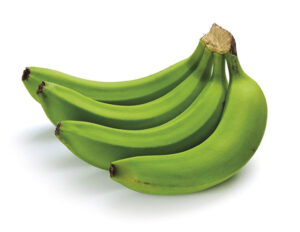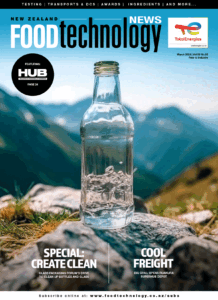
BY SARAH BERESFORD
Amir Amani has always loved food and from a young age loved nothing better than hanging out in the kitchen experimenting with ingredients. “I loved making and eating food, and often mixed together odd combinations — sometimes the results were a bit strange, others were delicious,” he says talking about growing up in his homeland Iran. His early proclivities have led to serious studies in food science and a driving ambition to go beyond cooking food that not only looks and tastes good, but also offers additional health benefits.
“My parents recognised my passion for food early on and pushed me into the science side of it. I did a BA in food science and Technology and loved it, so went on to immerse myself in it and do a Masters degree. I was really captivated by the importance of functional food products.”
So, when the time came to consider doing a PhD he already knew where he wanted to focus his attention. “The only reason for me to continue was to concentrate on a proposal for functional bread. In Iran bread is a staple food, it’s such an essential part of the whole idea of having a meal — even if you’re having rice with a meal, you must have bread too. Bread is so important — we have more than 20 proverbs with a wide range of meanings that mention the word bread.
“People have a lot of respect for bread there, and it’s because of that and the respect I have for the farmers and the whole process of making bread that I wanted to focus on it for my PhD.”
He proceeded to look for opportunities around the globe for his proposal to study his concept for fortifying bread using flour made from green bananas as a functional ingredient. He eventually contacted late Professor John Birch at Otago University who was engaging in research along similar lines; the university offered him a full scholarship and he came to New Zealand in September 2017.
His concept of fortifying bread with prebiotics from using green banana flour led to a lot of experimentation — and eating plenty of bread — over the next three years of working on his PhD thesis. “I might have needed only a few milligrams at a time for my experiments, but I had to bake a whole fragrant loaf to get it,” he says laughing. “I had baked bread since I was young for fun — I remember the first loaf I made I used almonds and walnuts — but this was a scientific approach.”
Amani stresses that his green banana flour bread is a vastly different beast from the banana bread that is so familiar to Kiwis. “Banana bread is made from mashed, fully ripened bananas which are loaded with sugar — once the bananas are ripe, the starch becomes more digestible. However, in the early stage of ripeness, when a banana is green, it has a considerable amount of what is called resistant starch, which is not digestible but supports the growth of probiotics, which are essential for a healthy gastro-intestinal system.”
The catch with accessing the health benefits of resistant starch is that it is found only in certain raw starchy foods, like potatoes, which are unpalatable in this form. “Who wants to eat an uncooked potato or an astringent tasteless green banana?” Amani asks. “No one does. We bake or fry them, but once this happens we lose the health benefits of that precious resistant starch.”
Amani’s challenge was to find a process to transform the green bananas into an additive with the least effect on its ingredients, particularly resistant starch. The hurdle was finding the ideal drying method and he experimented with two different methods: freeze-drying and the more traditional air-forced baking. A lot of research was involved, and he says that although the freeze-drying was a highly successful technique, at this stage it is not as easily accessible as the air forced oven-drying method.
Then he had to perfect how to make bread with the green banana flour that had all the desirable qualities of taste and texture but still retained the pluses of resistant starch.
“I finished my PhD in three years, and I wanted the next step to be working on commercial production. I really didn’t want to do my PhD for the sake of having a degree. I approached the innovative centre at the university but they were already fully committed, and then the next thing was that Covid happened.”
Amani is still hoping that all his research will eventually result in the commercial development of the green banana flour product.
“It’s not just that it offers so many dietary benefits, it’s also extremely sustainable. Bananas are the most imported fruit in New Zealand — it’s estimated we consume around 20kg a person a year — and a lot is discarded. It does not have to be damaged; it can be that it’s just too curved or whatever. It’s bizarre and it’s a crazy amount of waste. The green banana flour uses every bit of the fruit — even the peel.” So, Amani’s product ticks a lot of compelling boxes when looking at taking it a step further.
Although he hasn’t managed to attract commercial interest in developing his green banana flour further as yet, Amani has still been pursuing his interests. He’s currently working as a process technician for Synlait, and on another note has been exploring his passion for providing audio content with a range of podcasts. His podcast series with Tania Williams, looking at Māori culture through a Persian lens, was broadcast last December. “I thought it would be interesting for people coming to NZ to get an introduction to Māori culture,” he says.
Amani is interested in lots of ways that he can enrich our lives, and he would love to see his green banana flour bread hit the shelves for others to enjoy and benefit from. “I always used to think I’d love to be a baker one day,” he says.






























































































